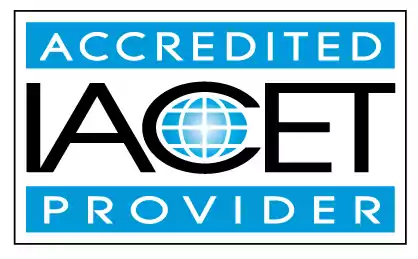Identify important safety procedures when transporting children
Learn the important safety procedures for transporting children in early childhood education and child care centers. Identify appropriate practices for identifying and demonstrating safety to children, and understand the importance of individual planning in ensuring their well-being.Trainings incorporating this outcome
CDA Subject Areas
Proficiency Level
Target Audience
Topic Areas
States
Alabama (4) Alaska (4) Alberta (4) Arizona (4) Arkansas (2) Australia (4) California (4) Colorado (4) Connecticut (4) Delaware (4) District of Columbia (4) Florida (4) Georgia (3) Hawaii (4) Idaho (4) Illinois (1) Indiana (4) Iowa (4) Jamaica (2) Kansas (4) Louisiana (4) Maine (4) Manitoba (1) Maryland (3) Massachusetts (4) Michigan (4) Minnesota (2) Mississippi (4) Missouri (1) Montana (4) Nebraska (4) Nevada (2) New Hampshire (4) New Jersey (1) New Mexico (4) New York (2) Newfoundland and Labrador (4) North Dakota (4) Nova Scotia (4) Ohio (4) Oklahoma (4) Oregon (4) Pennsylvania (3) Prince Edward Island (4) Puerto Rico (2) Quebec (4) Rhode Island (4) Saskatchewan (4) South Carolina (2) South Dakota (4) Tennessee (1) Texas (4) Thailand (1) United Kingdom (2) Utah (4) Vermont (4) Virgin Islands (4) Virginia (4) Washington (4) West Virginia (4) Wisconsin (3) Wyoming (3)
35 hours courses
6 hours courses
1 hours courses
 0.1 CEUs
0.1 CEUs online
4.4/5
Related Outcomes
- Identify appropriate practices for identify and demonstrate an children: Identify importance of individual planning
- Identify appropriate practices for identify and demonstrate an children: Identify examples of appropriate activities for different ages
- Identify safety considerations for building, physical premises, and transportation and plan for emergency response.
- Identify the importance of math instruction with young children.
- Identify appropriate practices for identify and demonstrate an children: Teacher directed vs child directed
- Identify appropriate supervision practices for children during transportation and field trips.
- Identify common mental health disorders in children and the importance of early intervention.
- Identify safety management and supervision practices of school-aged children.
- Identify appropriate practices for identify and demonstrate an children: components of a lesson plan
- Identify appropriate practices for identify and demonstrate an children: Define Developmentally Appropriate Practice
- Identify and contemplate bias and explore anti-bias approaches that support working with children and families.
- Identify the types of barriers children's with disabilities/special needs face and ways to adapt curriculum to fit those needs.
- List recommended feeding schedules and identify strategies for introducing new food for children birth through age three.
- Identify the importance of being sensitive to those who decide not to nurse and of welcoming environment that encourages mothers to breastfeed
- Identify the recommended feeding patterns of school-age children.
- Identify the appropriate forms and procedures for reporting child abuse and neglect
- Identify the nutritional needs of children aged four and above.
- Identify the recommended nutritional needs of children five years to twelve years of age
- Identify strategies in promoting sound health and safety principles for in child care.
- Identify the most common sources of stress for young children.
Related Articles
- Oregon Providers Health and Safety Training
- Nevada initial requirements for Transportation Safety
- Child care education
- Ready and Resilient: The Importance of Emergency Preparedness
- How to Start a Daycare with the Right Qualifications
- Emergency Preparedness in Childcare: Creating and Practicing Safety Protocols
- Emergency Preparedness Training Every Childcare Provider MUST Know
- What Parents and Educators Need to Know About Child Safety
- Basic Health and Safety: The Must-Know Training for Childcare Professionals
- Emergency Preparedness Training for Childcare Providers: Keeping Kids Safe in a Crisis
- MSDE Basic Health and Safety: What Does It Cover?
- From Meds to Milestones: Why Medical Administration Training Is Crucial in Child Care Settings
- From Tornadoes to Lockdowns: Prepare Your Childcare Center for the Unexpected
- Demystifying the Online MSDE Basic Health and Safety Course
- Critical Skills for Childcare Professionals: Health, Safety, and Emergency Preparedness Training
- 🚌 What Do Illinois Transportation Regulations Mean for Childcare Field Trips? 🚦
- 🚌🌞 Field Trip Ideas in California for Childcare Providers
- 🚌🌄 Engaging Field Trip Ideas in Nevada for Childcare Providers
- 🚌❤️ Field Trip Ideas in Illinois for Childcare Providers
- 🚌🍑 Field Trip Ideas in Georgia for Childcare Providers